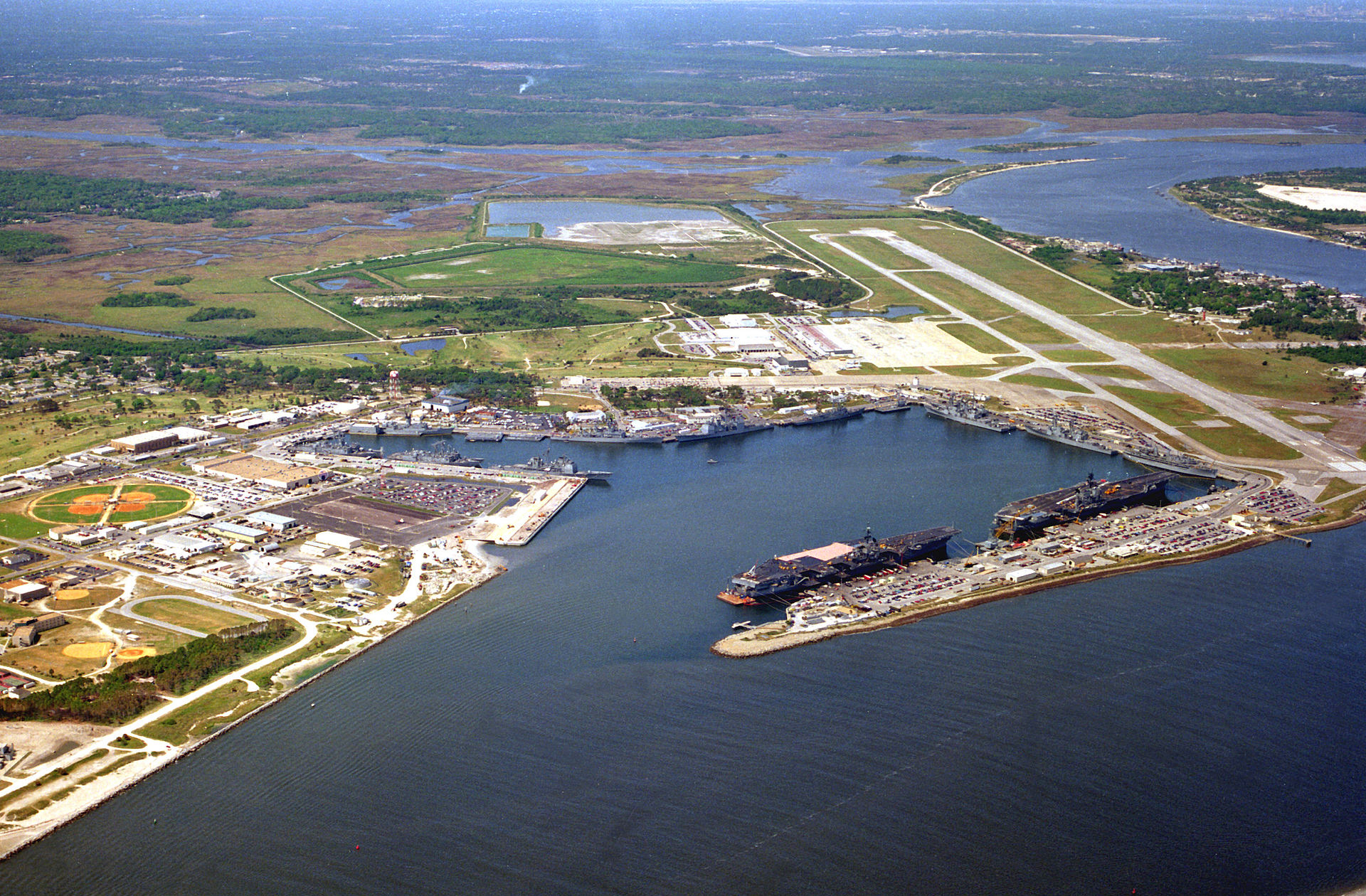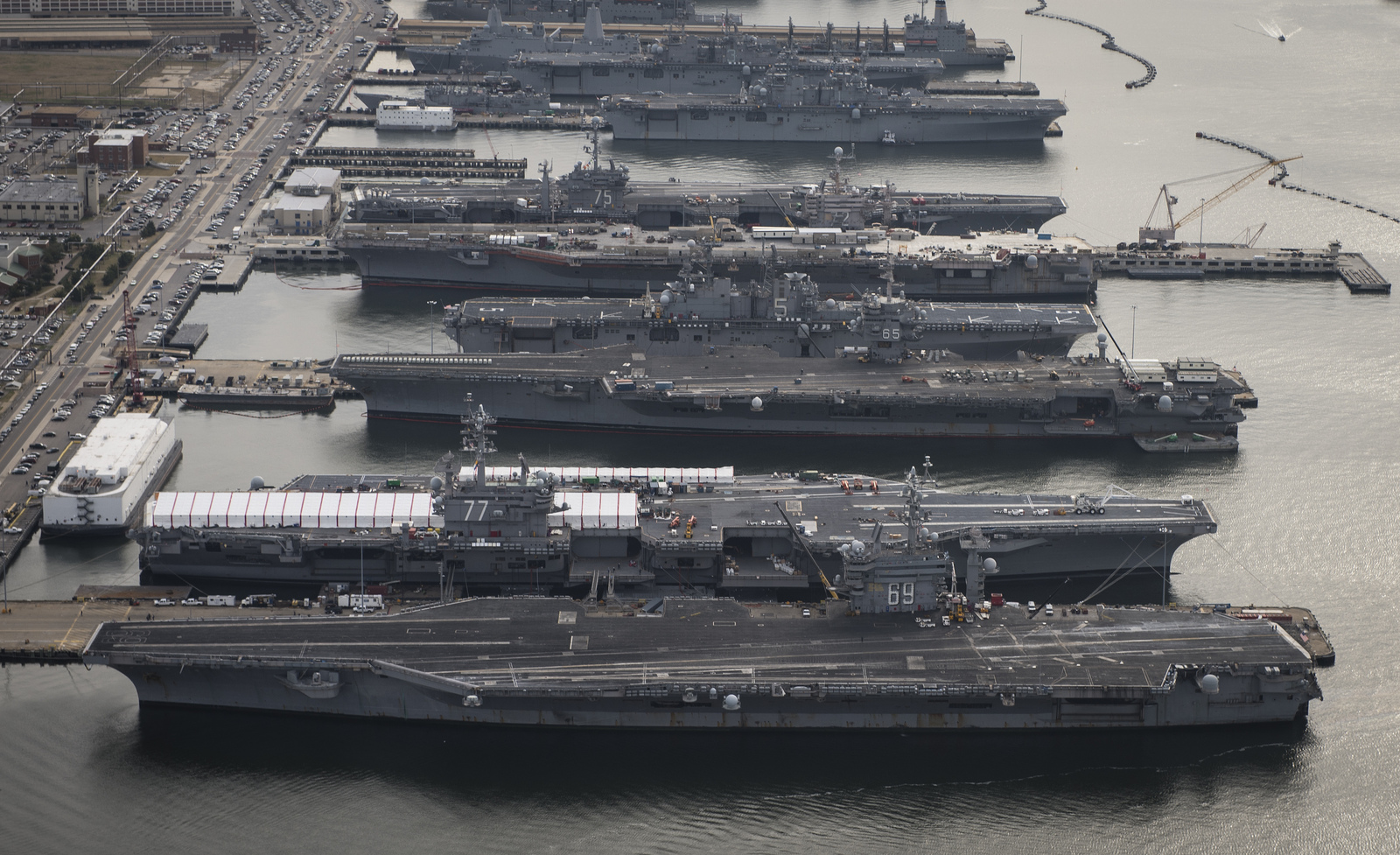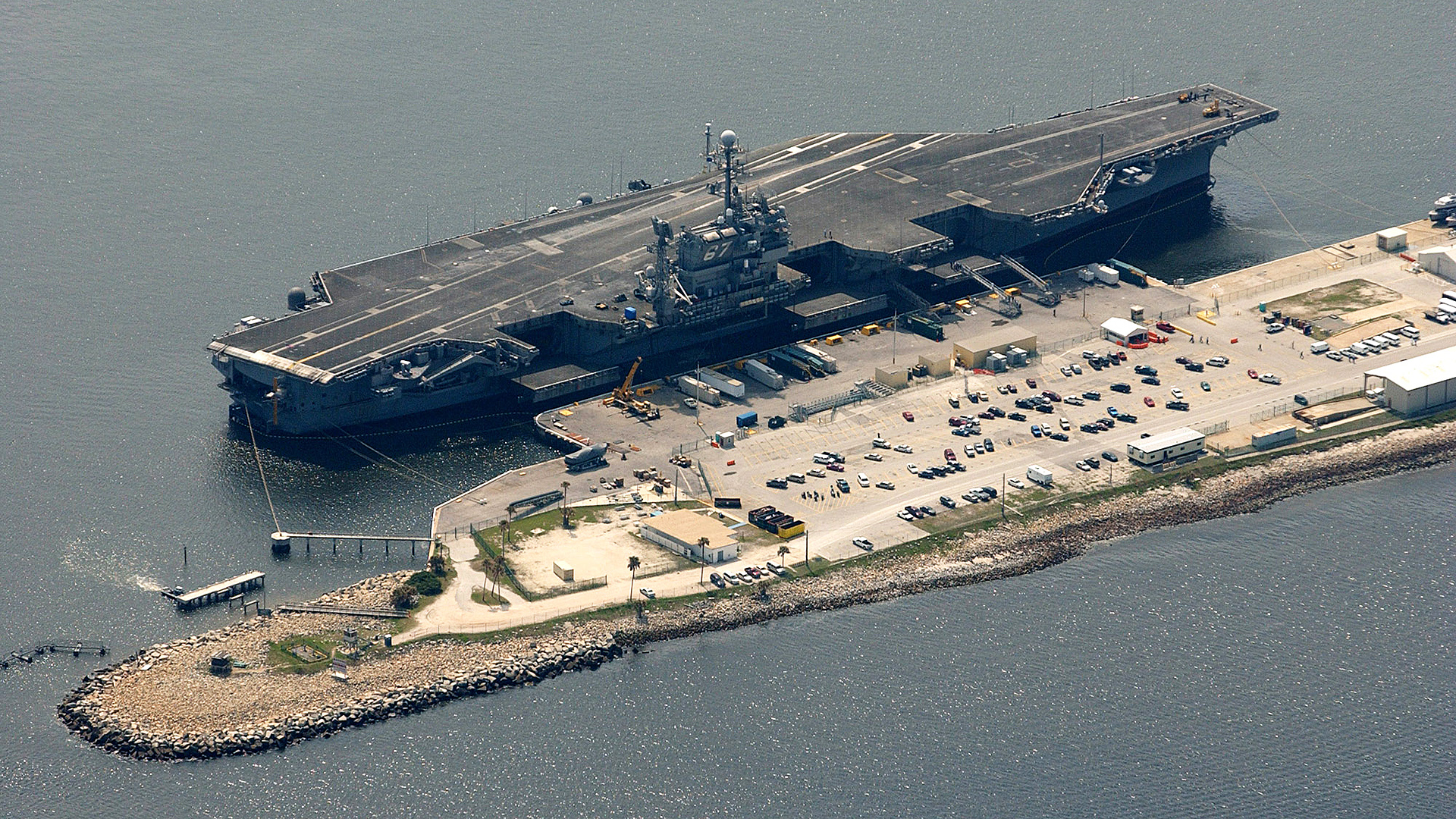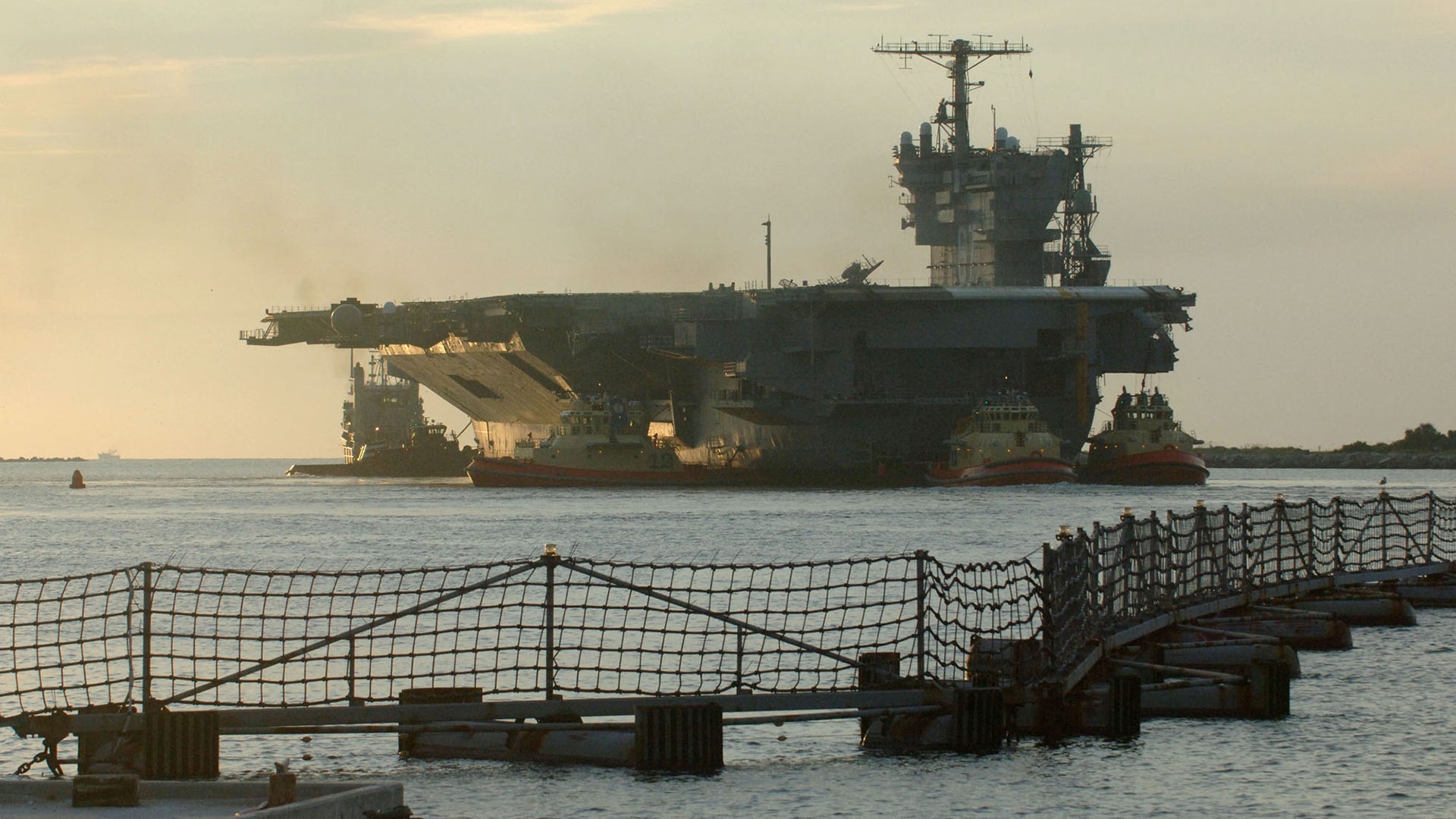It’s been a decade since a US Navy supercarrier called Naval Station Mayport home. With the retirement of the conventionally-fueled USS John F. Kennedy (CV-67), the base was left partially vacant as it did not have the facilities to support a nuclear-powered carrier over the long term. Now, Florida’s entire congressional delegation to Washington is joining forces in an attempt to make Mayport a supercarrier base once again.
Mayport has long been seen as a strategic offset to the Navy’s master naval base in Norfolk, Virginia, where all of its East Coast supercarrier fleet is currently based. The fear is that a single attack or natural disaster could see not just a large portion of America’s carrier inventory destroyed, but also the only facility on the east coast that can support them.
Currently, five of America’s ten supercarriers are based in Norfolk, with two more being constructed nearby. Modern supercarriers take many years to build and don’t come cheap. They are the most expensive single weapon system in the world, with the new USS Gerald R. Ford (CVN-79) costing a whopping $13 billion—and that’s not including research and development expenditures. In other words, they’re not something that can be easily replaced and are very much considered a low density, high-value military asset.

The idea that the Navy has invited too much risk by over-centralizing its east coast carrier fleet is nothing new. Shortly after the “Big John’s” retirement in 2007, studies like the 2010 Quadrennial Defense Review, defense secretaries and other force posture influencers have called for upgrading Mayport to support a nuclear-powered supercarrier, but the funds have never materialized.
The naval station and the colocated air station have remained active, with four destroyers, four cruisers, two Littoral Combat Ships, three coastal patrol vessels, an amphibious transport dock, a dock landing ship, and the amphibious assault ship USS Iwo Jima based there. A Medium Endurance Coast Guard Cutter and smaller auxiliary vessels also reside at the base. But bringing back an aircraft carrier to the naval station would not only be a huge boost to the local economy, but it would also provide strategic hedge.
With all this in mind, Senators Rubio and Nelson spearheaded the movement to get all of Florida’s representatives banned together to send a collective letter to Secretary of Defense James Mattis and Acting Secretary of the Navy Sean Stackley arguing for the necessary improvements to the naval base to accept a nuclear carrier as part of the 2018 budget. You can see the letter below:

There is a clear logic behind spreading out America’s most prized warfighting assets a bit more than they currently are, and considering the massive investment in these ships to begin with, the cost of upgrading an already largely outfitted facility and operational facility would be a small price to pay for the strategic benefits. The total cost to do so was estimated by the Navy as $540 million, but the GAO says it will cost far less, coming in at between $258 and $356 million depending on a range of factors. That is roughly the cost of between two and three F-35C Joint Strike Fighters.
The west coast has two major carrier bases—San Diego and Bremerton—another supercarrier is forward-based in Japan. Providing the ability disperse supercarriers in a similar fashion on the east coast carrier should be a priority for the Navy, not an afterthought.

Considering President Trump wants a 12 carrier force—an 11 carrier force is currently stipulated by congress but only ten ships are active due to the early retirement of the USS Enterprise—there may be even more supercarriers to spread around in the future.
A lot of this also comes back to the Navy’s insistence on building only supercarriers instead of a mix of smaller carriers and supercarriers. These smaller carriers could be designed as nuclear or conventionally powered vessels, and they could allow for more flexible basing and less rigid deployment and maintenance schedules.

It is somewhat upsetting that the Navy has not already moved ahead with making Mayport capable of housing a supercarrier once again, but it is also not that surprising. The Navy brass is far more obsessed with buying new toys than taking the proper steps to make sure the ones it already has are based in a resilient manner.
Hopefully Secretary of Defense Mattis will agree with the congressional delegation’s arguments and Mayport will be the home of a supercarrier once again in the not so distant future.
Contact the author: Tyler@thedrive.com
